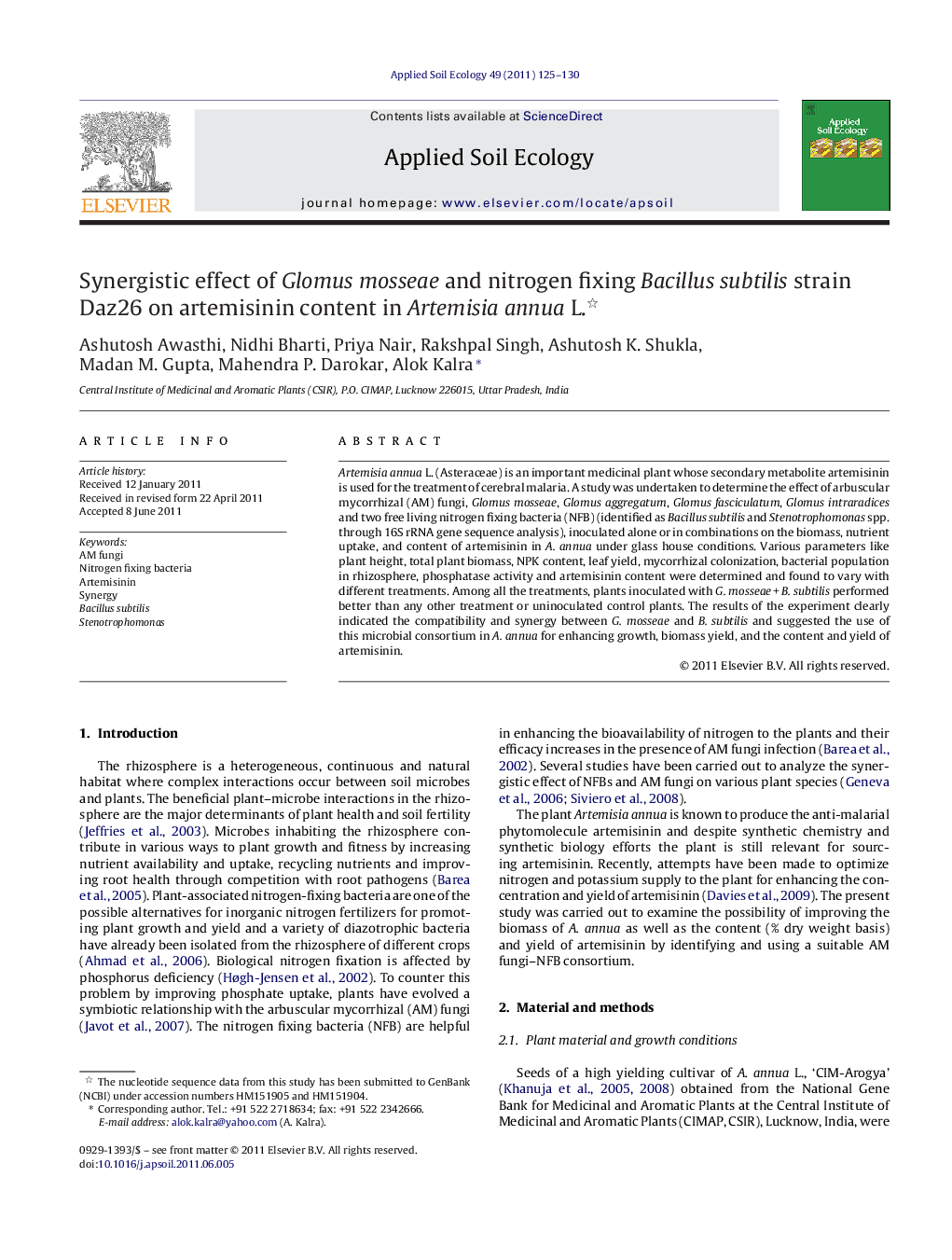| کد مقاله | کد نشریه | سال انتشار | مقاله انگلیسی | نسخه تمام متن |
|---|---|---|---|---|
| 4382705 | 1617834 | 2011 | 6 صفحه PDF | دانلود رایگان |

Artemisia annua L. (Asteraceae) is an important medicinal plant whose secondary metabolite artemisinin is used for the treatment of cerebral malaria. A study was undertaken to determine the effect of arbuscular mycorrhizal (AM) fungi, Glomus mosseae, Glomus aggregatum, Glomus fasciculatum, Glomus intraradices and two free living nitrogen fixing bacteria (NFB) (identified as Bacillus subtilis and Stenotrophomonas spp. through 16S rRNA gene sequence analysis), inoculated alone or in combinations on the biomass, nutrient uptake, and content of artemisinin in A. annua under glass house conditions. Various parameters like plant height, total plant biomass, NPK content, leaf yield, mycorrhizal colonization, bacterial population in rhizosphere, phosphatase activity and artemisinin content were determined and found to vary with different treatments. Among all the treatments, plants inoculated with G. mosseae + B. subtilis performed better than any other treatment or uninoculated control plants. The results of the experiment clearly indicated the compatibility and synergy between G. mosseae and B. subtilis and suggested the use of this microbial consortium in A. annua for enhancing growth, biomass yield, and the content and yield of artemisinin.
• Effect of AM fungi and nitrogen fixing bacteria on Artemisia annua was studied.
• G. mosseae and B. subtilis synergistically affect artemisinin content in the plant.
• A consortium consisting of these two improved plant growth and artemisinin content.
• It will help to reduce artemisinin production cost in a sustainable manner.
• This in turn would lead to tangible benefits for human health.
Journal: Applied Soil Ecology - Volume 49, September 2011, Pages 125–130